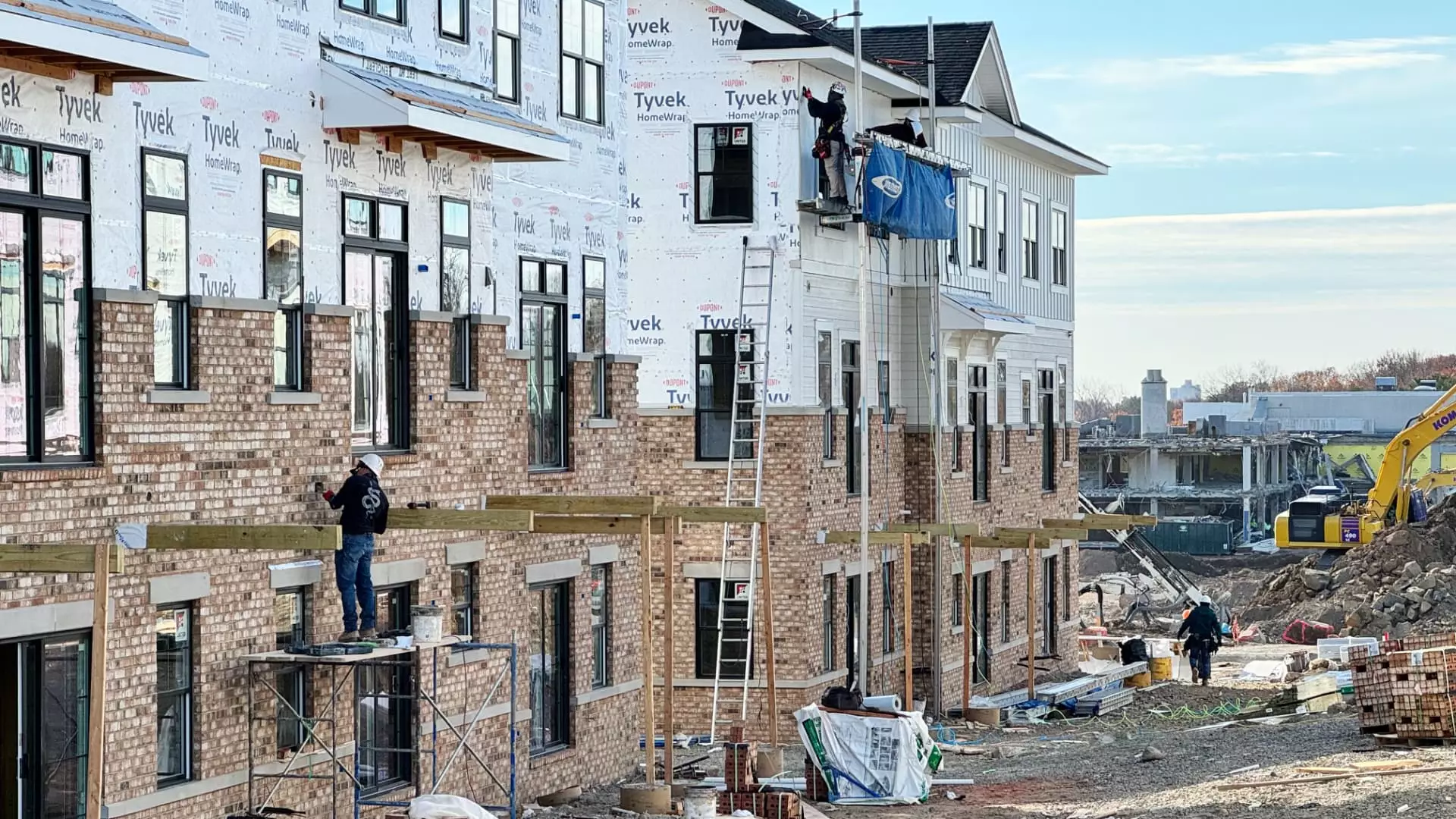The current state of housing inflation holds significant implications for economic policy, particularly for President-elect Donald Trump as he ascends to office. With housing costs representing a substantial portion of the consumer price index (CPI)—approximately one-third—any effective strategy to manage inflation will hinge heavily on navigating the complexities of the housing market. While recent trends in consumer prices offer a mixed bag of insights, they raise fundamental questions about the feasibility of achieving the Federal Reserve’s inflationary targets in the near future.
In a recent consumer price index report, shelter costs demonstrated a glimmer of relief, marking the smallest annual increase since February 2022. Specifically, two primary rent-related components showcased their slowest monthly gains in over three years. However, the overarching picture remains concerning: even with the slowdown, housing inflation persists at 4.7% annually—a rate reminiscent of levels not seen since the early 1990s, barring the disruption caused by the COVID-19 pandemic. These figures suggest that despite more favorable headlines, the housing sector continues to exert considerable upward pressure on overall inflation.
Remarkably, housing expenses contributed about 40% to the monthly increase in CPI, even outpacing food costs. This reinforces the notion that any broader efforts to stabilize inflation would necessitate addressing shelter costs decisively. With the current CPI creeping upwards to 2.7%—even reaching 3.3% once food and energy are excluded—the path to the Federal Reserve’s coveted 2% target appears far from straightforward, mainly contingent on further easing in the housing market.
Historically, housing supply has been hampered by a multitude of factors, exacerbated during the pandemic period, where demand and construction saw significant disruptions. As of November, housing supply remained approximately 17% below the levels recorded five years prior, according to Realtor.com. In light of these conditions, which include surging rents—an average national rent of $2,009 in October, surging 30% over the past four years—it becomes apparent that traditional market corrections have not yet fully taken hold.
Policymakers have been attuned to these challenges, but the results remain inconsistent. While the Federal Reserve has attempted to mitigate high interest rates—vital to enabling more affordable mortgage options—the interplay of fiscal controls and interest rates has proven complex. The average 30-year mortgage rate has risen approximately in tandem with the recent Fed cuts, which complicates the situation further, leaving potential homebuyers caught between rising costs and fluctuating rates.
Potential Solutions and Challenges Ahead
Transitioning to the president-elect’s potential solutions, Trump’s administration is poised to explore deregulation as a cornerstone of its housing policy. This could manifest in increased accessibility for homebuilders, provisions to unlock federal land for development, and broader efforts to curtail red tape. However, there is skepticism within the economic community regarding the efficacy of these initiatives in promptly addressing the root causes of rising shelter costs.
Understanding the implications of these policies is critical, particularly since some economists warn that Trump’s proposed measures could inadvertently contribute to inflation, complicating the already intricate balance needed to hit the Federal Reserve’s desired inflationary mark. This sentiment is echoed by numerous experts who assert that mere deregulation may not suffice to alleviate the considerable supply-demand imbalance afflicting the housing sector.
The Burden of Interest Rates and Economic Outlook
Amid these complexities lies a potential Catch-22 for the incoming administration: efforts to alleviate housing burdens may falter if interest rates do not stabilize at favorable levels. The current stance of the Federal Reserve suggests that rates will not decrease until shelter costs come down. Yet, lower rates are essential for mitigating housing expenses, creating a paradox that complicates any strategy aimed at economic stabilization.
Despite a somewhat optimistic outlook from Wall Street—where some economists believe rental prices may normalize towards levels conducive to achieving 2% inflation—the overarching concerns surrounding shelter costs remain unaddressed. Until tangible progress on easing these costs can be realized, the Biden administration’s economic objectives may face considerable headwinds. Balancing interest rates, housing supply, and economic growth will remain the central challenge as the new administration takes up the reins in an already tumultuous economic environment.
While the future of housing inflation under the incoming administration remains uncertain, its implications for broader economic policies cannot be overstated. Addressing these critical issues will require a nuanced and holistic approach that considers not just immediate measures, but long-term structural reforms capable of reestablishing equilibrium in the housing market.

